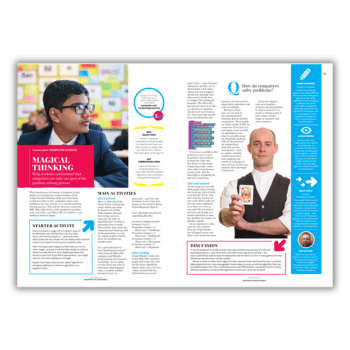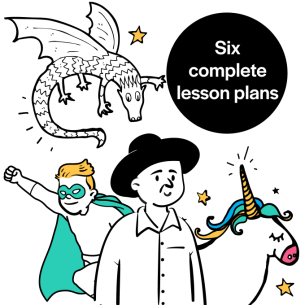Help students understand that computers are only one part of the problem-solving process with this free computational thinking lesson plan…
This lesson/series of lessons will give pupils an introductory understanding of key computational thinking skills. It will help them to discover that, in fact, computers don’t solve problems. Instead, we use them to aid the problem-solving process.
You can demonstrate this by using a BBC Micro:Bit device – emulated via online tools or with a real Micro:Bit if available – and adding a touch of magic.
Why teach this?
Mention ‘teaching computational thinking skills’ to a teacher and they may start to panic. In reality, they are a lot easier to address than they seem at first glance.
Key curriculum links
Pupils will develop an understanding of key computational thinking skills – algorithms, decomposition and pattern recognition.
Starter activity
Show pupils a magic trick. It doesn’t have to be elaborate, but one that has a bit of a ‘wow’ factor will hook the pupils in. Card tricks work well, as they are very visual.
You can always find a tutorial online if you need to brush up your wizardry skills. After ‘wowing’ pupils, explain to them that you’re not really ‘magic’; you just know the exact steps (or rules) to follow to make the trick work.
Maybe give them the secret to your trick if you feel it appropriate – you might want to carry the mystique on though!
Explain that these rules are also called ‘algorithms’, and give a definition of what an algorithm is, to expand further.
Mark Thomas Ward is head of computer science, business and vocational studies and Digital Schoolhouse lead teacher at St John Fisher Catholic Voluntary Academy.











